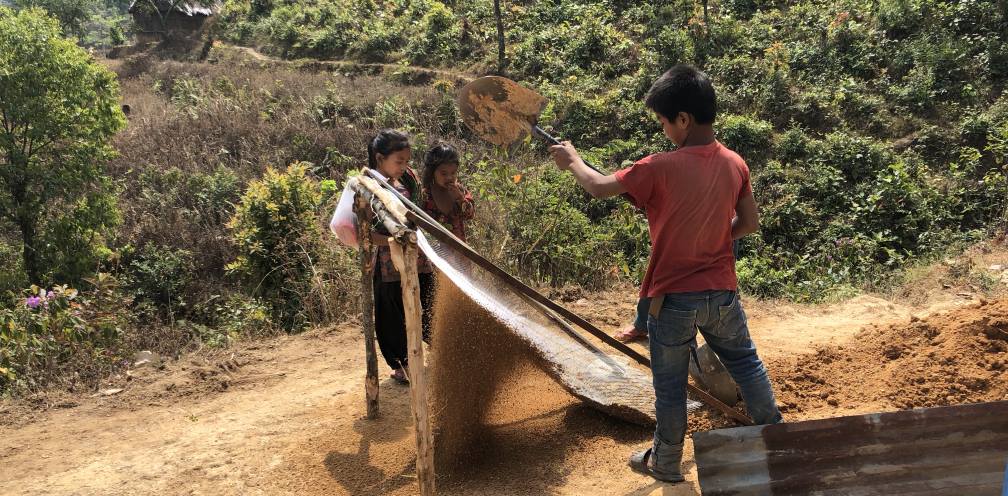
CEPP: Kalidevi Post School Project
From School to School - April 2018
In previous issues of the Bikas magazine, we already discussed the workings of one of our partners in Nepal: CEPP. CEPP - The Centre for Educational Policies and Practices - aims to guarantee the right to basic education through the improvement of education policy at all levels - especially at the level of the local school, using existing facilities. They stand for an all-encompassing education policy in Nepal, an education policy that is sensitive to social, cultural and environmental issues and that is relevant to the community. They work closely with local communities, politicians, teachers and children, do a lot of fieldwork and have a good and long tradition of working with volunteers of all kinds. Since 2016, CEPP, the KUL architecture department in Ghent, and a number of architects and pedagogues work closely together. They want to develop a school project in Nepal that, in addition to its traditional function as a place to gather and share knowledge, also seeks to fulfil a community function within the village. In this way we try to achieve a higher involvement of parents, pupils, teachers and school board in the school as a whole. We named our project ‘Post School Project’, because it goes beyond the usual concept of a primary school in rural Nepal.
Kalidevi: a beautiful and lively place
The village where this project will be realized is located in hilly Makwanpur district, east of Hetauda. About 100 families live there, most of them Tamang. The current school in Kalidevi consists of a building with 6 classrooms, a sanitary block and a smaller building that once served as a small library. The school board and the parents and teachers involved are very enthusiastic about their new school. Currently, children in Kalidevi school can attend school until Class 5, but the school has the potential to be upgraded from group 5 to group 8. There are no schools in the immediate vicinity. The new design will replace an old, heavily damaged school building, which the villagers have already demolished. We are also investigating whether we can provide new sanitary facilities for the school in the future. This summer (August 2017), two students of the KUL have already built a playground on the slopes of the school during their summer internship of 6 weeks, in collaboration with the villagers. Building with the villagers was a good way to get to know the village, and to get in touch with the residents, their way of life and their expectations. This year in February CEPP, a group of 30 students and teachers from the KUL and several volunteers organized a workshop in the village. In the workshop we discussed the design for the new school and we worked it out together with the villagers. In that short week we even started digging and the students and villagers worked together, casting the foundations of the school.
| Kalidevi Schoolproject |
An instructive process, certainly not only for the students
Since the workshop in February, we have worked hard to develop the project further. We intend to build as much as possible with local manpower and local materials, in order to reduce building costs, to support the local economy and to burden the environment as little as possible. I myself went on the spot again in April for a 'site visit'. We made preparations to produce Compressed Stabilized Earth Blocks (CSEB), went through details and plans, made appointments. Choosing the right materials and transporting building materials to the site, are, as always, the most difficult issues. The village is allowed to use wood that will be harvested from the community forest, but we are unsure as yet about the exact amounts that can be used for the new school. We will have to make several decisions before the Monsoon arrives. Once the sky-locks open, no tractor will hit the spot!
ar. Wart Thys
This project is a collaboration between our Nepalese partner CEPP and a Belgian team consisting of 4 lecturers from the KUL: Ignaas Back, Klaas Vanslembrouck, Hilde Bouchez and Tom Callebaut; 2 experienced volunteers and pedagogues: Carine Verleye & Paul Beké; architect Wart Thys and graphic artist Lin Seminck.

